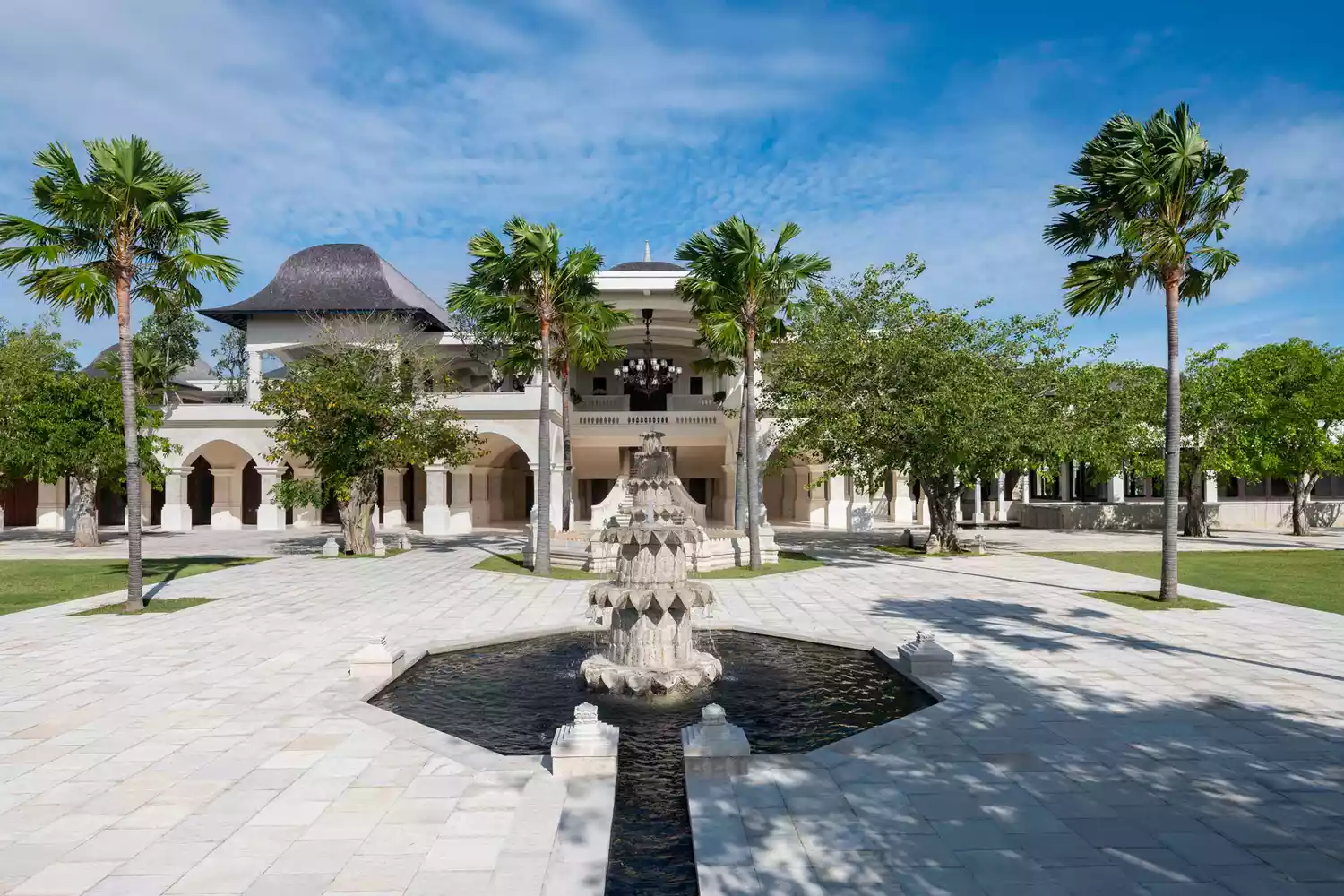Before even leaving our vehicle at Jumeirah Bali, the newest beach resort on Indonesia’s famed Island of Gods, I felt special. The welcome party waiting at the end of a promenade of limitless arches, columns, and flowing water– not to discuss the cooled passion fruits atop crushed ice in gilded bowls– appeared poised for the arrival of royalty. Which, as I found over a weekend see, is exactly the point.
The extravagant Dubai-based hotel brand name seems to have spared no expense in developing a completely contemporary first-class, all-villa resort with robust ties to a luxurious part of Bali’s ancient past. Through design, cuisine, events, and medspa services, the resort brings to life the decadence and love of the Majapahit Empire, whose power peaked in the mid-14th century.
We became aware of this renowned period from servers and our butler, all eager to tell stories of the royal age. This frangipani-scented resort that opened in late April 2022 is full of Instagrammable minutes and high style however is likewise rooted in genuine cultural connections that make it feel grounded.

In Bali, water is connected with filtration. Sitting on the Indian Ocean, it acts like one big water temple, with 3 infinity-edge, ocean-view swimming pools called for popular Majapahit tanks: Kolam Segaran, Balong Dowo, and Balong Bunder. They hover above a popular browse break I referred to as Dreamland, however, as we learned from a hand-written note left by our vacation home attendants, its is Cimongka.
The villas are palatial however in some way likewise captivating. There are 123– each with a personal swimming pool– filled with a gorgeous white and blue palette that feels very Dutch, another reference from Indonesia’s history. Exquisite is the very best word for the interiors, from the detailed trim covering the rooms beneath lofty exposed ceilings to stone walls and painted wooden pillars hand-carved by Balinese craftsmen plus artisanal ceramics.
The tactile Javanese and Hindu-influenced style is a cooperation between Grounds Kent Architects’ Martin Grounds and Denniston’s Jean-Michel Gathy. They’ve ensured beds are supremely dreamy, as are the huge free-standing bathtubs. Stylish arrangements of tuberose filled our space with a divine scent and enhanced the already sedative ambiance of the entire sophisticated suite.
As the perfect touch, we might peek at the ocean from our personal swimming pool, complete with a gargoyle-like Balinese statue spouting water and not one however 2 outside showers.
The resort has lots of lovely little links to the past, such as the jamu kunyit asam, a drink thought to reach back to the 13th century in Java. The cuisine was equally thoughtful and outrageously tasty, starting at Segaran Dining Terrace with a five-course chef’s table journey. It included highly spiced and aromatic dishes like silky buntut oxtail soup and barramundi steamed in banana leaf, which we enjoyed as waves crashed simply meters away.
Everything had a story, and nearly all the components were in your area sourced. The food was a real event of Bali and hugely creative: see the red-and-white Red Dragon cocktail of Bedugul strawberry with dragonfruit, Champagne emulsion, and Bali vodka made from sugarcane, representing the colors of the Majapahit.
On our 2nd evening, we experienced the romantic supper to end all, with thousands of flowers and lots of candles organized by the swimming pool outside our rental property. Our five-course extravaganza completed with a bartender appearing poolside to shake us up espresso martinis using Bali coffee and local seagrass jelly.
The following early morning the petals were still fresh when we slipped into swimsuit for a drifting breakfast. Think of appreciating coconuts, avocado toast, chia pudding, fruit-and-cheese plates, Indonesian breakfasts, and coffees from a giant basket while unwinding in your infinity pool.
The food isn’t the only indulgence.
The resort’s Talise Spa is home to a genuine Turkish hammam, another reference to the royal ambiance of the Majapahit and the renowned Princess Campa. They introduced the local Balinese elite to Ottoman bathhouse culture in the 14th century.
There are also 5 rooms for personalized treatments influenced by the judgment empire and including Balinese, Arabic, and European knowledge in pursuit of balance and harmony. I tried a Divine Therapy, which began by using ancient Balinese numerology utilizing my birthdate to identify– rather precisely– which of my 7 chakras is dominant and therefore needs balancing. For my throat chakra, the source of interaction, I was recommended a grounding, deep, muscular massage focused on my lower back, using lavender, rosemary, vetiver, sandalwood oil, and bergamot.
On another event, I felt feelings swirl through my body throughout a noise healing meditation with metal singing bowls to align my chakras before we dressed up in Balinese kebaya and kamen for a sunrise water filtration routine called melukat. As a priest, referred to as pak mangku, chanted quietly to a ringing bell, sprinkling and splashing us with holy seawater, flower water, and fresh coconut water, 2 girls in vibrant red outfit held matching fringed umbrellas behind us, like we were royalty.
We tucked flowers behind our ears and pushed rice into our third eye while wishing positivity for our spirits and thanking the gods for all the goodness in our lives.
Aquamarine waves struck the sand below as we considered it all, sometimes spraying a great salt mist. I understood then that while some resorts on the island provide a watered-down version of Balinese culture, Jumeirah’s commitment to it is outright. For me, this authentically fancy and multi-sensory ceremony was the conclusion of everything.
